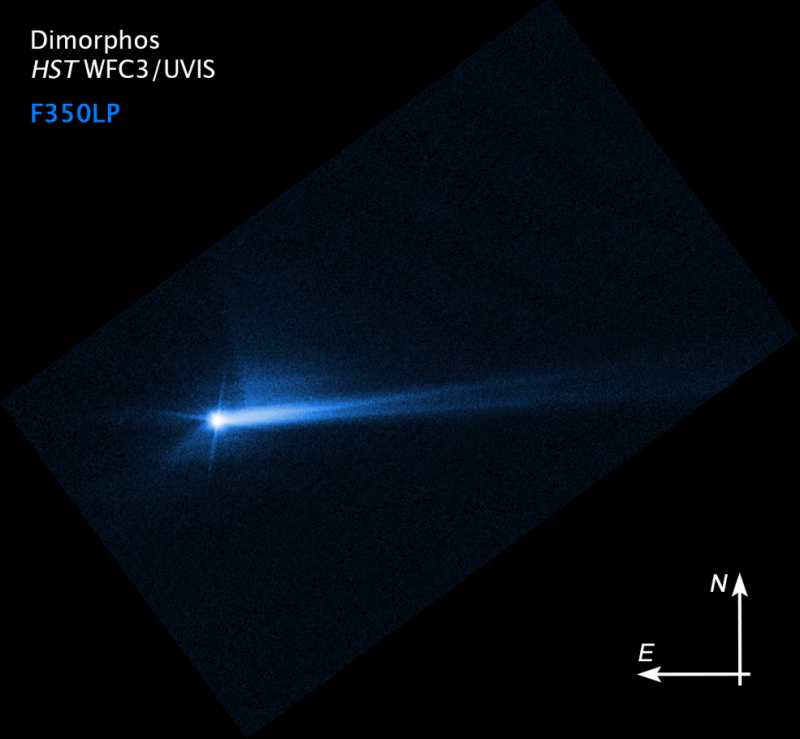
DART impact changed asteroid’s orbit
NASA said on October 11, 2022, that analysis of data obtained over the past two weeks by NASA’s Double Asteroid Redirection Test (DART) investigation team shows the spacecraft did successfully alter the orbit of the little asteroid moon Didymos B, aka Dimorphos. NASA said:
This marks humanity’s first time purposely changing the motion of a celestial object and the first full-scale demonstration of asteroid deflection technology.
Prior to DART’s impact, it took Dimorphos 11 hours and 55 minutes to orbit its larger parent asteroid, Didymos. But now, since DART’s intentional collision with the small moon on September 26, NASA said:
… Astronomers have been using telescopes on Earth to measure how much that time has changed. Now, the investigation team has confirmed the spacecraft’s impact altered Dimorphos’ orbit around Didymos by 32 minutes, shortening the 11 hour and 55-minute orbit to 11 hours and 23 minutes. This measurement has a margin of uncertainty of approximately plus or minus 2 minutes.
Before its encounter, NASA had defined a minimum successful orbit period change of Dimorphos as change of 73 seconds or more. This early data show DART surpassed this minimum benchmark by more than 25 times.
What DART intended to do
DART struck the asteroid – hoping to nudge it slightly off-orbit – at 23:14 UTC on Monday, September 26. Lori Glaze, director of NASA’s Planetary Science Division at NASA Headquarters in Washington, commented in the October 8 statement:
As new data come in each day, astronomers will be able to better assess whether, and how, a mission like DART could be used in the future to help protect Earth from a collision with an asteroid if we ever discover one headed our way.
So, DART was the first real test of our ability to defend ourselves from an asteroid on a collision course with Earth. In this case, DART’s target for this test – Didymos B, aka Dimorphos – is a tiny asteroid moon just 525 feet (160 m) in diameter. It’s about the size of a typical asteroid that might threaten Earth, NASA said. After all, the big asteroids are known, and their orbits have been tracked for decades. None of them are, at the present time, on a collision course with Earth. But little asteroids are still being discovered, however.
In general, this test was meant to show if we’re ready to take on any threatening asteroids that could be headed our way. And indeed, while we don’t know all the details yet, we do now know that it’s possible to deflect an asteroid from its path.
WOW! DART! That was so cool!!! pic.twitter.com/ukO11uZiFZ
— EarthSky (@earthskyscience) September 26, 2022
Team is still assessing DART impact
In addition, NASA said the DART investigation team is still acquiring data with ground-based observatories around the world. They are also using radar facilities at NASA Jet Propulsion Laboratory’s Goldstone planetary radar in California and the National Science Foundation’s Green Bank Observatory in West Virginia. NASA explained:
Focus now is shifting toward measuring the efficiency of momentum transfer from DART’s roughly 14,000-mile (22,530-kilometer) per hour collision with its target. This includes further analysis of the ‘ejecta,’ the many tons of asteroidal rock displaced and launched into space by the impact. The recoil from this blast of debris substantially enhanced DART’s push against Dimorphos – a little like a jet of air streaming out of a balloon sends the balloon in the opposite direction.
To successfully understand the effect of the recoil from the ejecta, more information on of the asteroid’s physical properties, such as the characteristics of its surface, and how strong or weak it is, is needed.
These issues are still being investigated.
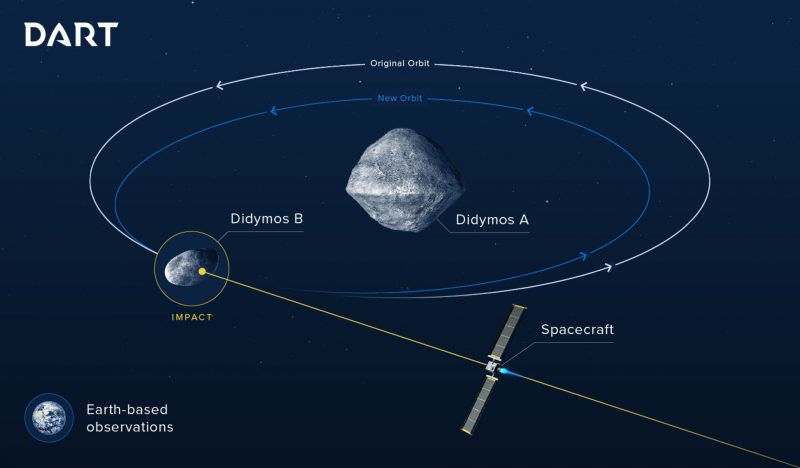
The DART mission is only a test
To be sure, Didymos B never posed a threat to Earth. This little moonlet and its parent asteroid orbit the sun in an elliptical path that brings them close to Earth and then out past the orbit of Mars. But, as NASA explained prior to September 26:
This test [showed] that a spacecraft can autonomously navigate to a target asteroid and intentionally collide with it to change the asteroid’s motion in a way that can be measured using ground-based telescopes. DART will provide important data to help better prepare for an asteroid that might pose an impact hazard to Earth, should one ever be discovered.
You can learn much more about the DART mission, Didymos B and any meteors that might result from the impact here.
ATLAS observations of the DART spacecraft impact at Didymos! pic.twitter.com/26IKwB9VSo
— ATLAS Project (@fallingstarIfA) September 27, 2022
What we saw, through DART’s eyes
DART carried a powerful camera, called DRACO. Four hours before impact, DART switched into autonomous control, using DRACO’s images to guide itself to crash onto Didymos B. Then as the spacecraft neared the asteroid, DRACO transmitted back to Earth closeups of Didymos B’s surface features. It shared its images at a rate of one per second, to provide a video-like experience for viewers.
Indeed, if you watched (as many of us at EarthSky did), you saw Didymos B first appear as a separate tiny dot to the upper right of a brighter dot (Didymos A). Then, very quickly it seemed, DART came closer and closer … and Didymos A and Didymos B both resolved into actual rocky bodies in space. Ultimately, DART swept past Didymos A, and it left the frame. Meanwhile, Didymos B got closer, and closer, and closer … then nothing.
Additionally, three minutes after DART struck the asteroid, LICIACube also flew past Didymos B, capturing images and video of a dust cloud wafting from the asteroid.
IMPACT SUCCESS! Watch from #DARTMIssion’s DRACO Camera, as the vending machine-sized spacecraft successfully collides with asteroid Dimorphos, which is the size of a football stadium and poses no threat to Earth. pic.twitter.com/7bXipPkjWD
— NASA (@NASA) September 26, 2022
DART asteroid strike, in pictures
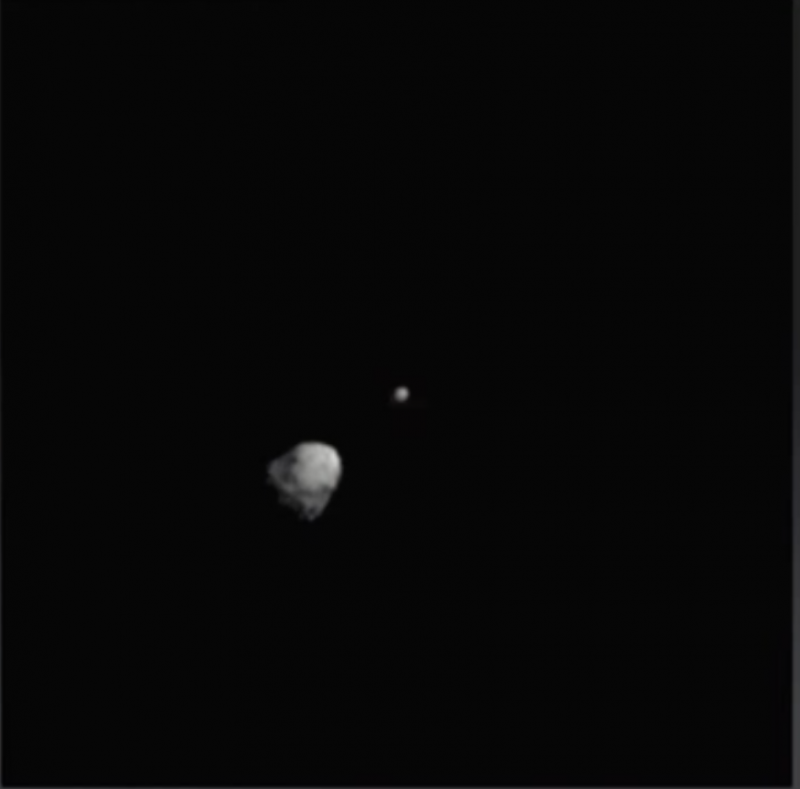
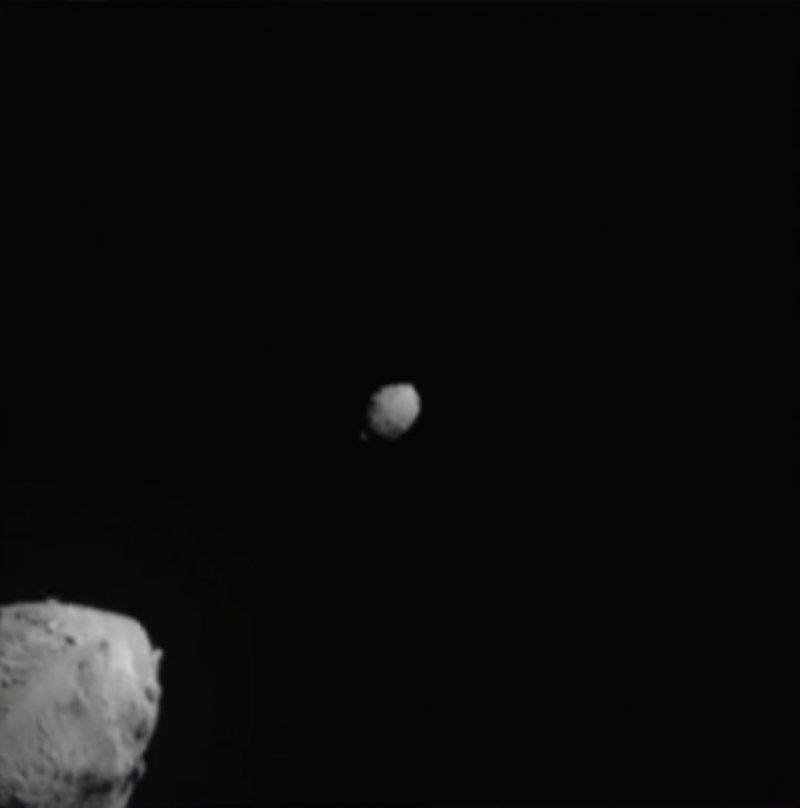

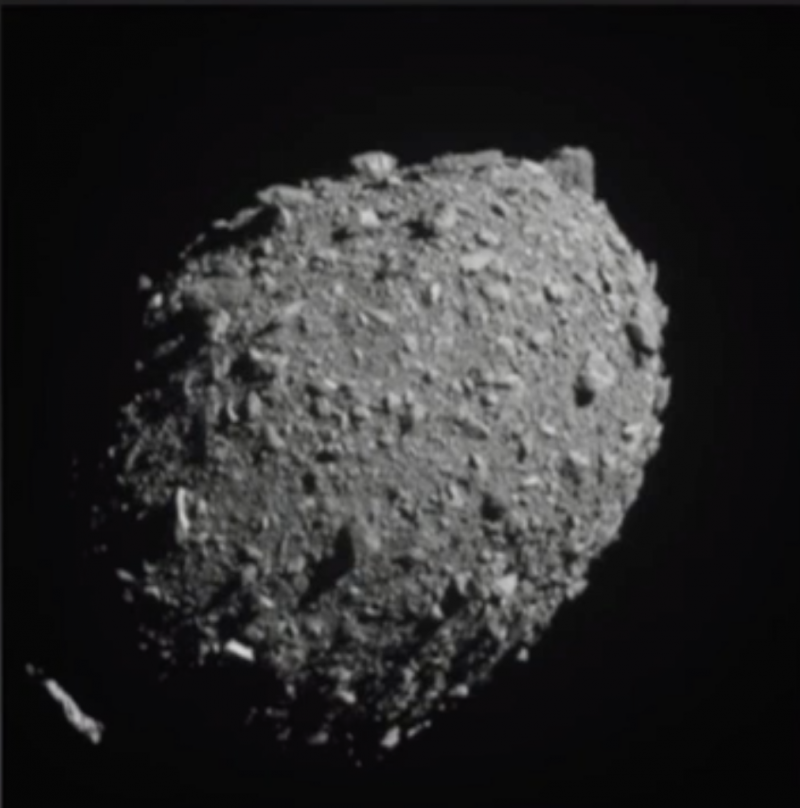
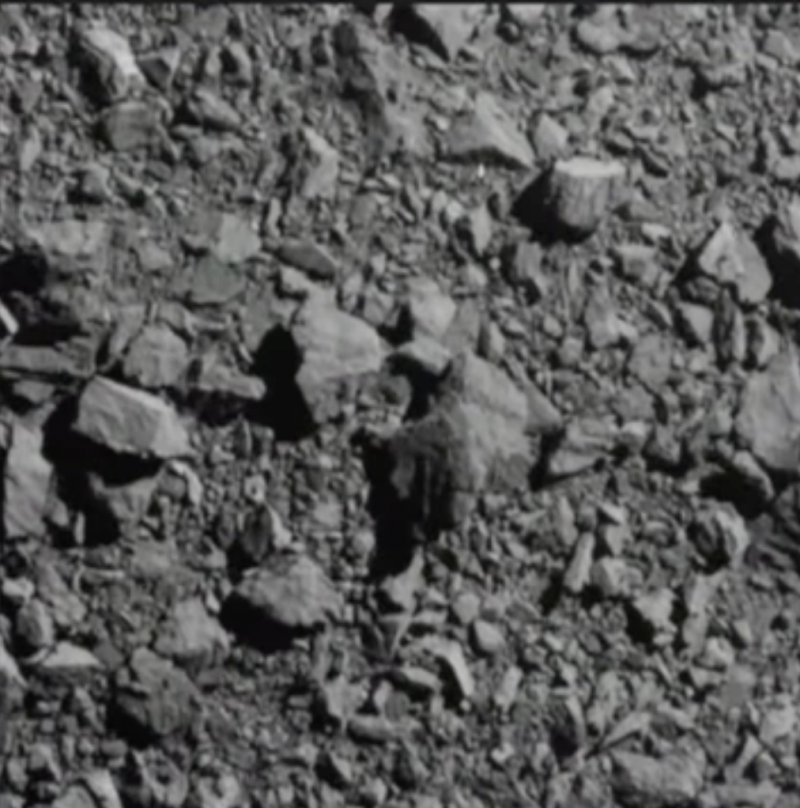
LICIACube has now passed through the Didymos system and is continuing on in solar orbit. Its images of the impact will be downloaded in the coming hours
— Jonathan McDowell (@planet4589) September 26, 2022
Bottom line: The DART spacecraft got closer and closer to its asteroid target – then struck it – on Monday, September 26, 2022. It was the first real test of our ability to defend ourselves from an asteroid on a collision course with Earth. NASA said on October 11, 2022, that analysis of data obtained over the past two weeks shows the spacecraft did, indeed, successfully alter the orbit of Dimorphos.











